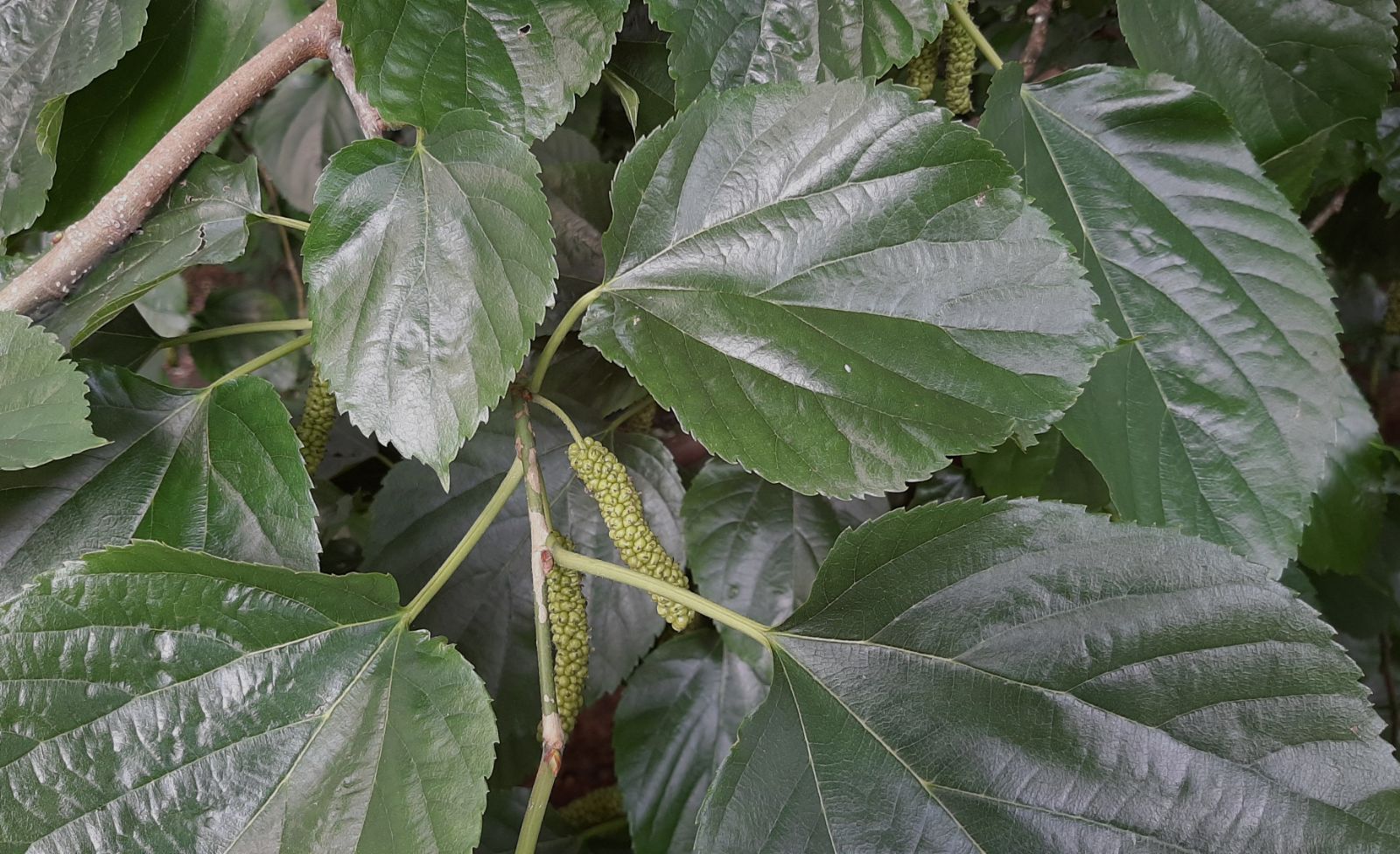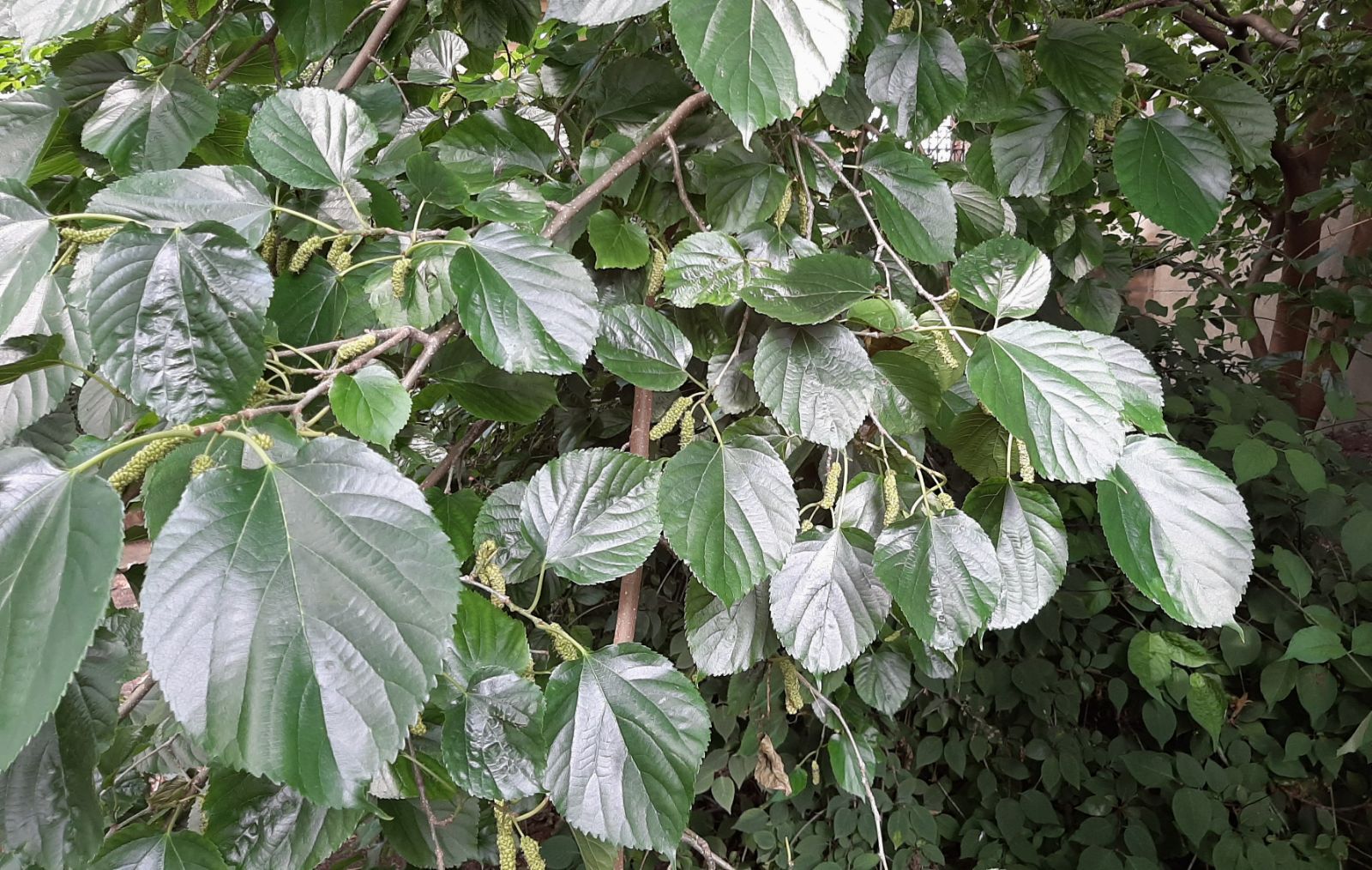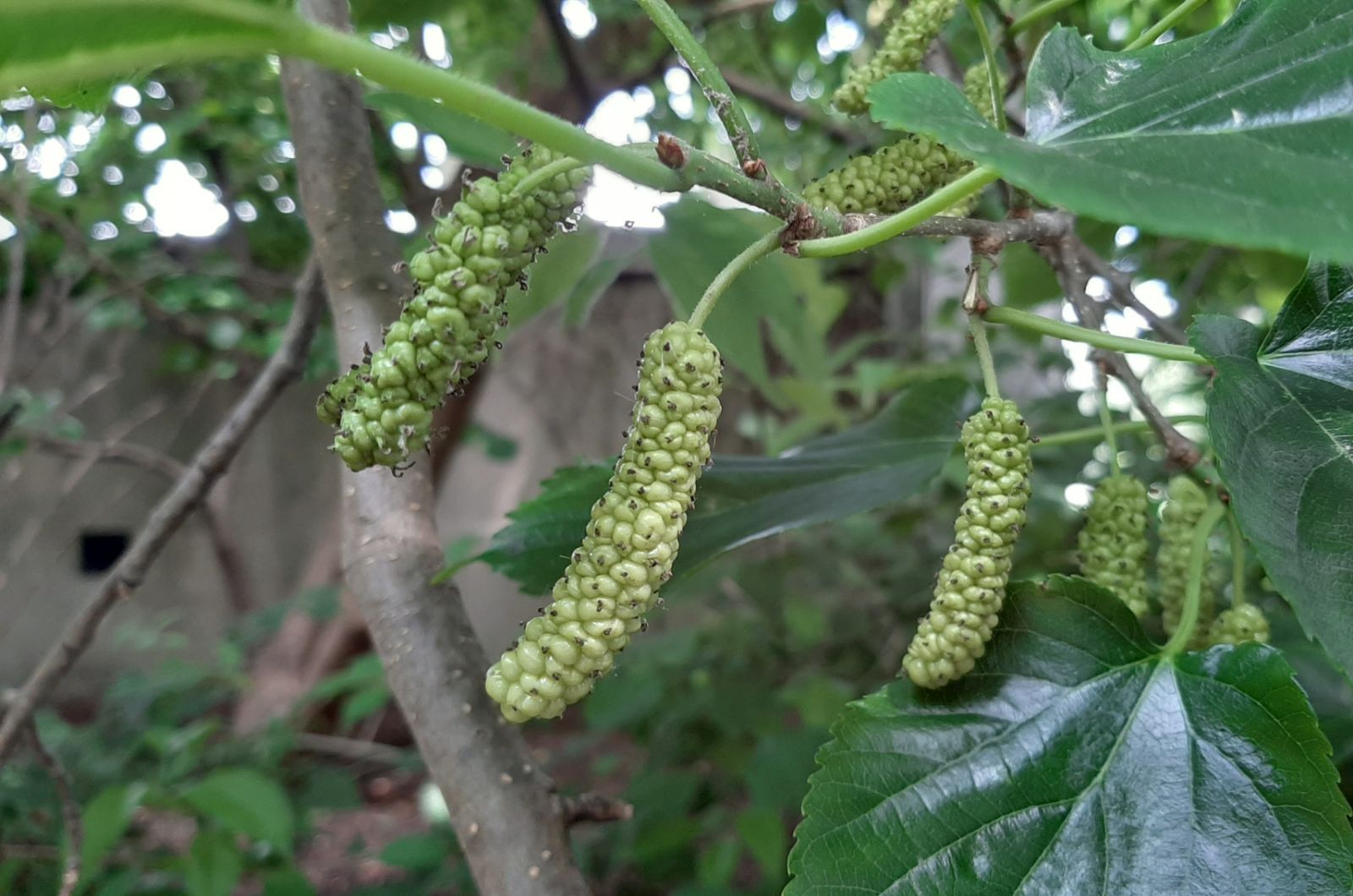Morus macroura
Sponsor
Kindly sponsored by a member of the International Dendrology Society.
Credits
Tom Christian & Peter Coles (2022)
Recommended citation
Christian, T. & Coles, P. (2022), 'Morus macroura' from the website Trees and Shrubs Online (treesandshrubsonline.
Genus
Common Names
- Bola
- Ayum-asing
- Bula
- Dieng-dylliet
- Long Mulberry
- Pakistan Mulberry
- Pantha-thing
- Pong-ray-baphang
- Rokseng
- Boula
Trees to 20 m, dioecious. Bark dark brown. Branchlets pubescent when young, especially at nodes. Winter buds ovoid-ellipsoid to ovoid, white pubescent, 0.2–1 cm long. Stipules linear, 0.5–3 cm, pubescent. Leaves ovate to broadly ovate, 5–15 × 5–9 cm, thin, with 4–6 pairs of veins each side of midvein; upper surface dark green, with a soft pubescence along veins; lower surface pale green, softly pubescent along veins when young; base rounded, cordate or truncate, margin minutely and densely serrate; apex acute to short-acuminate; petiole (1–)2–4 cm, pubescent. Male inflorescences 2 per node, 4–8(–16) cm, on pubescent peduncles 1–1.5(–2.5) cm; male flowers with ovate, ciliate calyx lobes, adaxially pubescent, filament c. 2.5 mm, anther globose. Female inflorescences 2 per node, 5–12(–16) cm, on peduncles 1–1.5 cm; female flowers with pubescent calyx lobes of two types, ovary ovoid, ± compressed, pubescent, style absent, stigma 2-branched, papillate. Syncarp maturing yellowish white, 6–12(–16) cm. Flowering early spring, fruiting spring to early summer. (Wu, Zhou & Gilbert 2003; Razdan & Dennis Thomas 2021; Ghafoor 1985).
Distribution Bangladesh Bhutan Myanmar Cambodia China E Xizang, S Yunnan India Indonesia Java, Sumatra Laos Malaysia Nepal Thailand Vietnam
Habitat Mountain forests, tropical forests; (300–)1000–1300(–2200) m.
Morus macroura may be most familiar to western dendrologists in the guise of the selection ‘Pakistan’ (see below). This arose from a batch of plants raised from seed sent to the US from Pakistan in the 1980s; it seems improbable that this could have been the first introduction of a species known to western botany since 1851, but M. macroura is not a name one is likely to encounter in the classic dendrological literature.
Other forms of the species are presumably in cultivation; two accessions in the Royal Horticultural Society’s collections are identified simply as M. macroura, not as a named cultivar (Royal Botanic Garden Edinburgh 2022). It is also possible that forms of M. macroura are in a few collections, misidentified as M. alba (see, e.g., M. alba ‘Tehama’).
'Pakistan'
Synonyms / alternative names
Morus alba 'Pakistan'
This selection was first made in the US, from material sent in the 1980s by the Pakistan Agricultural Research Centre, Islamabad. It has been cultivated in Britain since at least the mid 1990s and is now available here commercially (Frank P Matthews 2022). Wherever it is grown or sold, it nearly always appears as a selection of M. alba, but it is set apart by the particularly long fruits, totally outside the accepted size range for M. alba but comfortably within that of M. macroura, and originating from the right part of the world.
These memorable fruits ripen very dark purple to black, but reportedly do not stain so readily as many other dark-fruited mulberries (Hatch 2021–2022). Reports as to the actual size of the fruits vary quite widely; several nursery catalogues suggest they can exceed 12 cm in length but Andrews, Feltwell & Lane (2012) give 6–8.5 cm as typical and 10 cm as an absolute maximum. The fruit is described as sweet with a good flavour, produced over six to seven weeks (Andrews, Feltwell & Lane 2012). Rare in gardens, so far, this selection seems to need reliable summer heat to thrive; a good example can be glimpsed through the railings at the southeast corner of Buckingham Palace at the end of Spur Road (pers. obs.).




